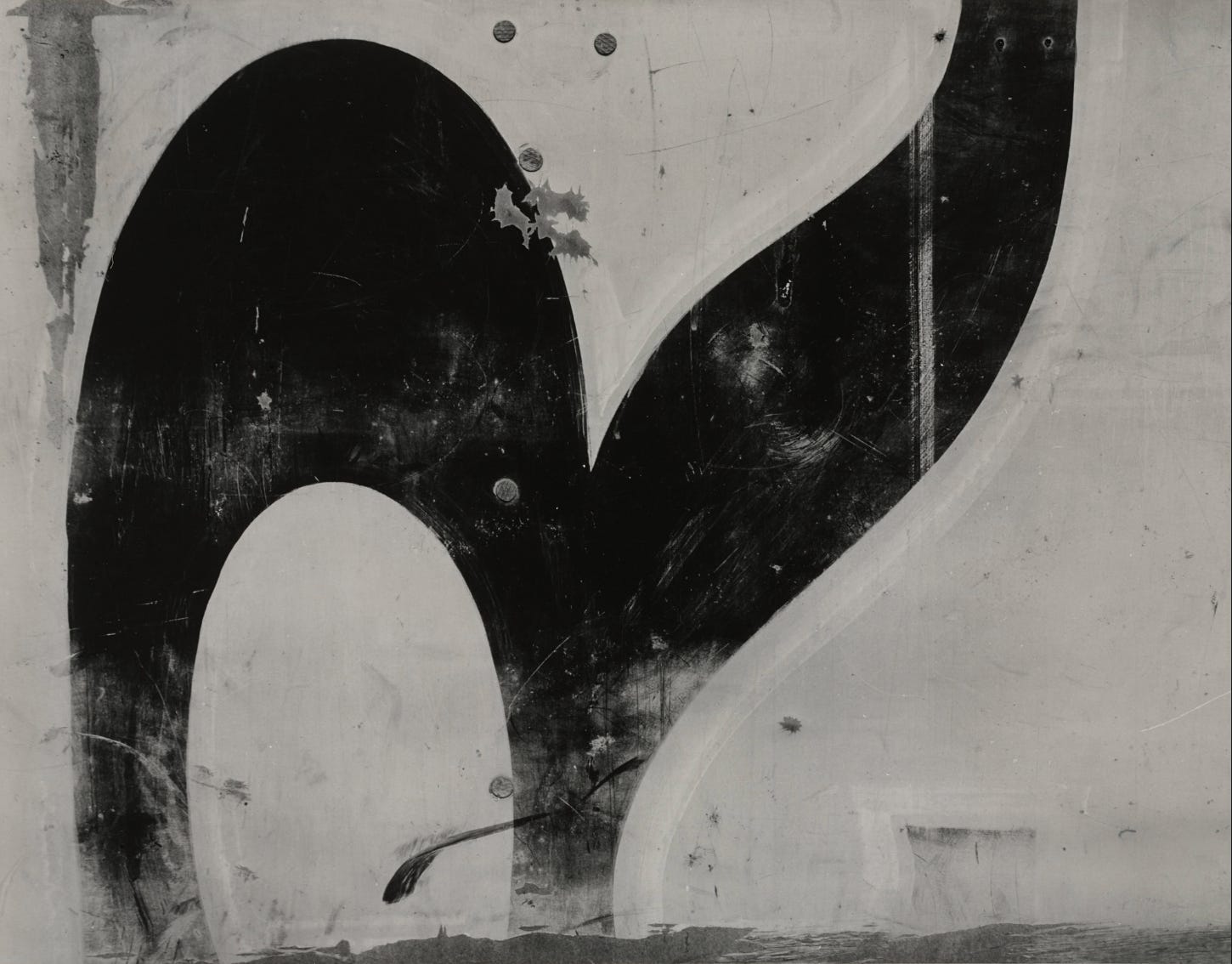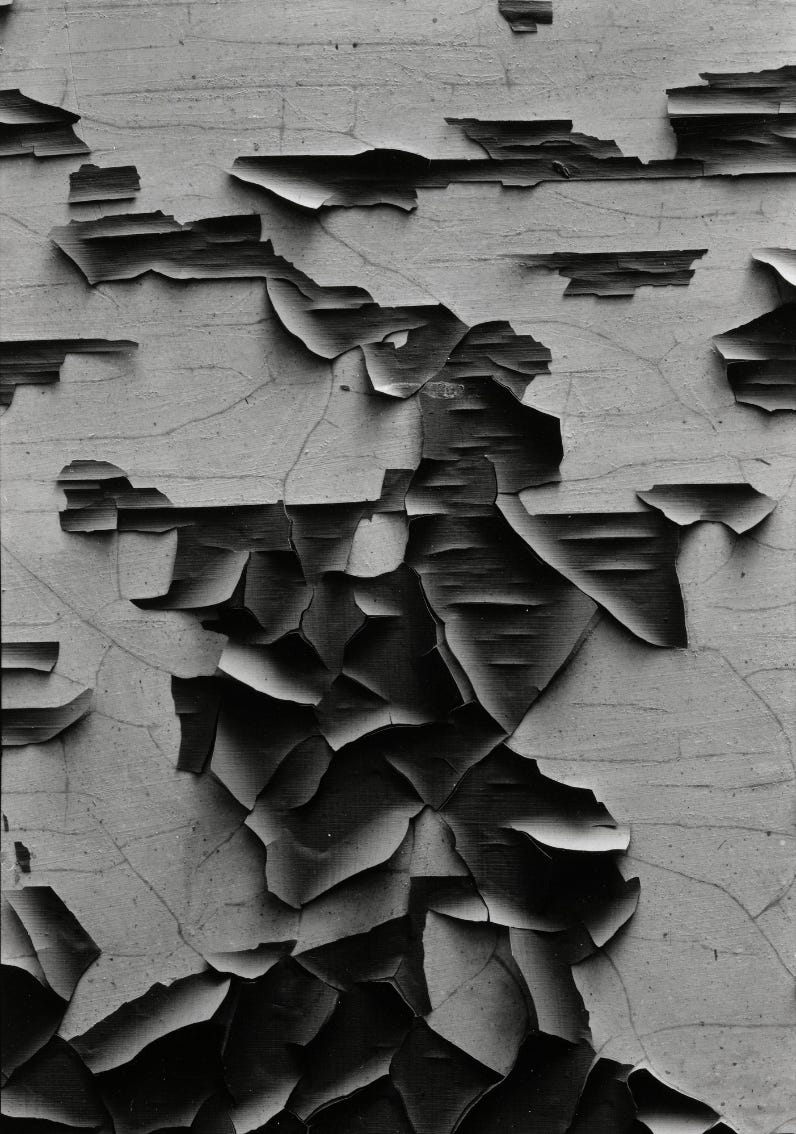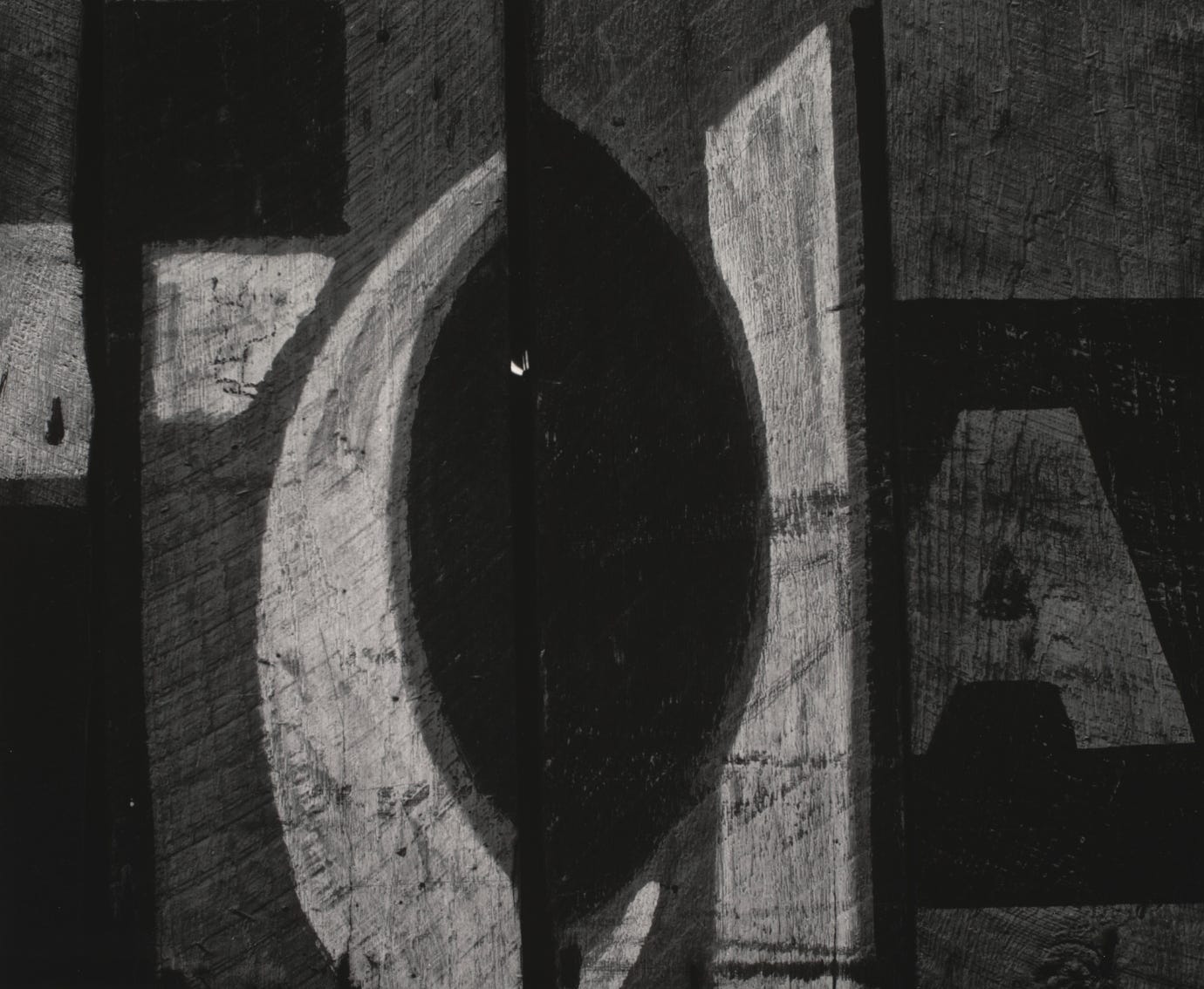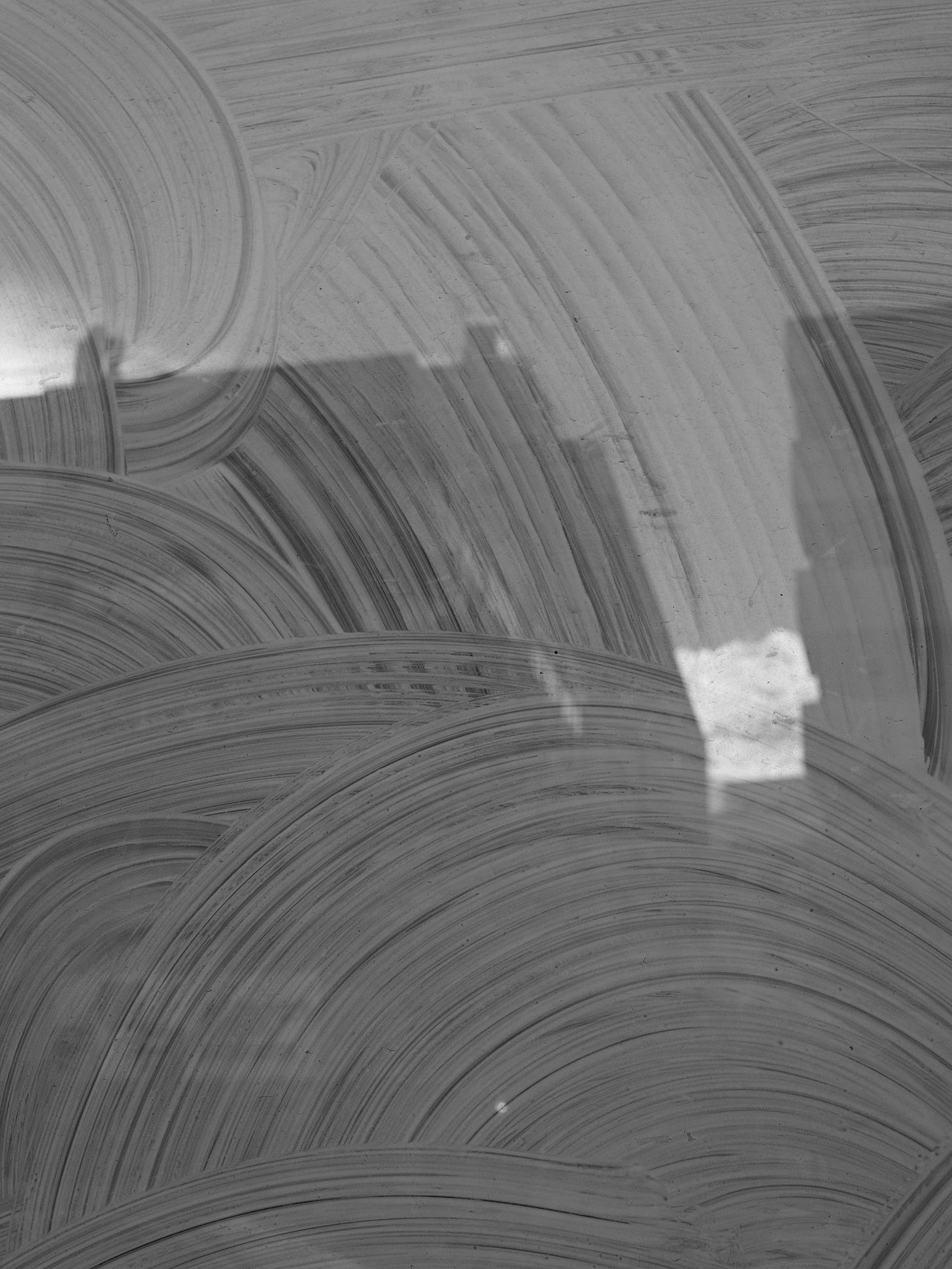Practice the fundamentals: on texture and Aaron Siskind
The fifth issue of the practice the fundamentals series exploring texture inspired by Aaron Siskind
This post is part of the Practice the Fundamentals series. This series started with a simple idea: create an approach to practice photography that improves specific skills. These skills are focused on the artistic side of photography rather than technical and gear issues. If you missed it, this post explains it in more detail and how it’s inspired by musicians.
As usual, this is the recipe:
Define the technique
Find inspiration from someone who does it well (in photography or other visual arts)
Apply it
Define the technique: texture
Texture photography is the art of capturing images that emphasize the feel or tactile appearance of a surface or object. When you look at an image and you can sense the fluffiness of a cat, texture is at play. Texture photography often uses close ups of surfaces to highlight patterns, roughness, smoothness, cracks…
These variations in texture create visually interesting images, and convey a tactile sensory experience through sight.
Find inspiration: Aaron Siskind
A great place to start for texture photography is the work of Aaron Siskind. Born in 1903, Siskind is an American photographer famous for photographing flat surfaces, and highlighting textures. He became interested in photography in the 1930s when he received a camera as a gift and began taking photos on his honeymoon. His early work focused on documentary photography meant to highlight social issues. His most famous documentary photography project, The Harlem Document, was a collection of photos taken during the 1930s including portraits and street photography in Harlem showcasing the reality of urban life in New York.
In the 1940s his work began to incorporate more abstract ideas. So much so that he had a falling out with the Photo League, a photography collective he was a member of. Perhaps his work became too abstract for the time. During that period, he found support from painters, particularly Franz Kline, who recognized the expressive power of abstraction and related Siskind’s new photography style to their own painting.
In an interview from 1981, Siskind describes how he was viewed by documentary photographers:
What I was really interested in was making pictures which satisfied me, which had a certain kind of beauty, and had a certain kind of mystery, had that kind of enchantment, but it was merely because I isolated subject matter that the documentary guys thought I was running away from life, so to speak.
Going against the tides, his work became a key influence for abstraction in photography. Art historian Lisa Hostetler writes:
Siskind's abstract photographs from the late 1940s and early 1950s were a major force in the development of avant-garde art in America. In rejecting the third dimension, this work belied the notion that photography was tied exclusively to representation. As such, Siskind's work served as an invaluable link between the American documentary movement of the 1930s and the more introspective photography that emerged in the 1950s and 60s.
Apply it: too easy?
This was a difficult one to apply because it felt strangely easy. When photographing texture, the images are 2D and remove the complexity of layering, foreground and background considerations. So what should I do? “Just” look for textures I like and photograph them closely. I guess the success of texture photography rests on the viewer being able to sense the texture of a surface by looking at it.
Siskind was being innovative when photographing graffiti close up as he was among the first people to do that, but I am not being particularly innovative here. Siskind's texture photography is special because it challenges conventional notions of photography as a purely realist tool. I am not pushing any artistic boundaries.
I suppose that the beauty in this type of photography is in seeing things that usually go unnoticed. It’s the transformation of overlooked every day objects into visually pleasing art. By abstracting and re-contextualizing everyday surfaces, we are encouraged to see the world in a new way and appreciating various textures.
I suppose that the value of these photographs also lies in the context of a wider body of work. It’s not about taking a single photograph of a nice texture, but creating a cohesive body of work that evokes certain feelings.
I found that looking at Siskind’s work and thinking about texture during photo walks makes me stop and look at things I would have otherwise ignored. Anyway, here are some nice textures from the past couple of weeks:












Some lovely textures! Interesting.